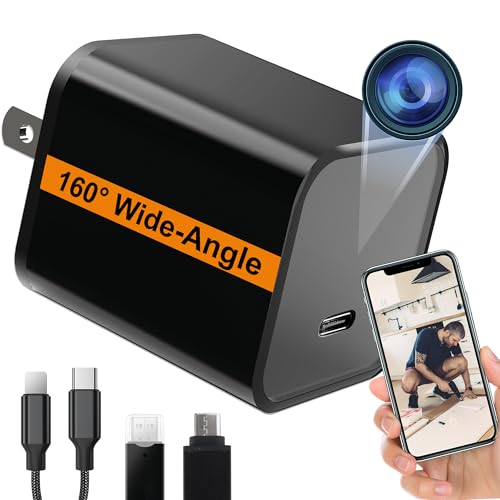
Wireless security cameras have become increasingly popular for home and business surveillance. They offer flexibility and ease of installation compared to traditional wired cameras. However, one common question that arises is whether you need internet access to use wireless security cameras.
The answer to this question depends on the type of wireless security camera you choose. Some wireless cameras require a constant internet connection to function, as they rely on cloud storage for video recording and remote access. These cameras typically send video footage to the cloud for storage and allow you to access the footage from anywhere with an internet connection.
On the other hand, there are wireless security cameras that do not require internet access to function. These cameras store video footage locally on a microSD card or a local network video recorder (NVR). They can still be accessed remotely through a mobile app, but the footage is stored on the device itself rather than in the cloud.
Do You Require Internet for Wireless Security Cameras?
Wireless security cameras offer flexibility and convenience, allowing you to monitor your property remotely. However, a common question that arises is whether you need internet access to use wireless security cameras effectively.
While internet connectivity is not always necessary, it can enhance the functionality of wireless security cameras. Most wireless cameras require an internet connection to enable remote viewing, alerts, and notifications. Without internet access, you may still be able to use the cameras locally, but you will not be able to access them remotely or receive real-time alerts.
Some wireless security cameras come with built-in storage options like SD cards, allowing you to record footage locally without internet access. However, to access and review the recorded footage remotely, you will need an internet connection.
In conclusion, while internet access is not always mandatory for using wireless security cameras, it significantly enhances their capabilities. If you want to take advantage of remote monitoring and alerts, having an internet connection is recommended.
Wireless Security Cameras Overview:
Wireless security cameras offer a convenient and flexible solution for monitoring your home or business. These cameras use Wi-Fi technology to transmit video footage to your smartphone, tablet, or computer, allowing you to keep an eye on your property from anywhere with an internet connection.
One of the key advantages of wireless security cameras is their easy installation process. Since they don’t require complicated wiring, you can place them virtually anywhere within your Wi-Fi network range. This flexibility makes them an ideal choice for both indoor and outdoor surveillance.
Key Features:
- Remote viewing: Access live video feeds and recordings from your camera using a mobile app or web browser.
- Motion detection: Receive alerts when the camera detects motion, allowing you to take action if needed.
- Night vision: Many wireless cameras come equipped with infrared LEDs for clear video footage even in low-light conditions.
Advantages of Wireless Security Cameras:
1. Easy Installation: Wireless security cameras are easy to install as they do not require complex wiring or professional installation. This makes them ideal for DIY enthusiasts.
2. Remote Monitoring: With wireless security cameras, you can monitor your property remotely using a smartphone, tablet, or computer. This provides you with peace of mind and enables you to keep an eye on your home or business from anywhere.
Disadvantages of Wireless Security Cameras:
1. Connectivity Issues: One of the main drawbacks of wireless security cameras is the potential for connectivity problems. Since they rely on a wireless network, they may experience interference or signal loss, leading to issues with video streaming or recording.
2. Limited Range: Wireless security cameras have a limited range compared to wired cameras. If the camera is located far from the router or access point, the signal strength may decrease, affecting the quality of the footage.
3. Power Source: Wireless cameras require a power source, which can be a challenge in some installations. They may need access to an electrical outlet or require frequent battery changes, depending on the model.
4. Security Concerns: Wireless networks can be susceptible to hacking or interference, making wireless security cameras potentially vulnerable to unauthorized access. Ensuring proper encryption and security measures is crucial to protect your camera footage.
5. Cost: Wireless security cameras tend to be more expensive than their wired counterparts, especially for high-quality models with advanced features. The initial investment and ongoing maintenance costs can be higher for wireless systems.
Internet Connection and Wireless Security Cameras:
Internet connection is not always required to use wireless security cameras. Some wireless security cameras are designed to work without the need for internet access, allowing you to monitor your property even in remote locations where internet connectivity may be limited or unavailable.
However, having an internet connection can provide additional benefits when using wireless security cameras. With internet access, you can remotely access live footage from your cameras, receive alerts and notifications on your smartphone or computer, and store recordings in the cloud for easy access and playback.
It’s important to check the specifications of your wireless security camera system to determine whether internet connection is necessary for its operation and to fully utilize its features. Some cameras may require internet connectivity for initial setup or firmware updates, while others may offer local storage options for recording footage without the need for internet access.
Alternative Options for Wireless Security Cameras:
If you are looking for alternative options that do not require internet, consider using a local storage solution like a microSD card or a dedicated DVR system. These options allow you to record and store footage locally without the need for an internet connection.
Another option is to use a cellular network for remote monitoring. Some wireless security cameras come with built-in cellular connectivity, allowing you to access live video feeds and recordings through a mobile app without relying on Wi-Fi or Ethernet.







